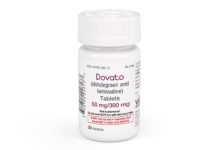The study shows that clinical interventions should take place at lower viral loads than those proposed by the current World Health Organization guidelines.
A large cohort study in South Africa has revealed that that low-level viraemia (LLV) in HIV-positive patients who are receiving antiretroviral treatment (ART) is an important risk factor for treatment failure.
Viraemia is a medical condition where viruses enter the bloodstream and thus have access to the rest of the body.
The findings indicate that the current World Health Organization (WHO)-defined threshold for virological failure does not identify a large subset of patients who are at increased risk of poor outcomes of ART. Thus, clinical intervention should take place at lower viral loads than those proposed by the current WHO guidelines.
Viral load refers to the amount of HIV virus in the blood.
A team of scientists including Dr Sergio Carmona from the University of the Witwatersrand, Johannesburg and the National Health Laboratory Service; the Ndlovu Research Consortium in Limpopo Province; the University of California San Diego, USA; and the University Medical Center Utrecht in the Netherlands, published the study in Lancet Infectious Diseases in November 2017.
Dr Sergio Carmona, in the division of Molecular Medicine and Haematology, School of Pathology at Wits University and Head of the Viral Load Unit at the National Health Laboratory Service, says: “This study provides clear evidence that clinical interventions should take place at lower viral loads than those proposed by the current WHO guidelines. We need to support the scale-up of viral load testing in low and middle-income countries as well as encourage adherence to ARVs and close follow-up of viral load results.”
The WHO guidelines on HIV viral load for antiretroviral therapy
The monumental response to the global HIV epidemic has led to an unprecedented number of patients on ART. The goal of ART in HIV positive patients is to suppress the viral load. From the start of the ART roll-out, South Africa has invested in laboratory capacity to enable routine viral load monitoring of all patients on ART. The implementation of viral load monitoring was done largely in accordance with WHO ART guidelines, which advises annual routine monitoring, and a threshold of 1000 copies/mL to define virological failure.
In clinical guidelines for high-income settings, cut-offs for therapy failure are lower, and clinical intervention is already required above 50 copies/mL. Suppression below 50 copies prevents disease progression towards AIDS (Acquired Immune Deficiency Syndrome – the result of untreated HIV infection), prevents selection of resistance, and lowers the risk of transmission of the virus to others.
The South African large-scale viral load monitoring programme yields unique insights into crucial aspects of WHO ART guidelines, such as the WHO’s current definition of virological failure.
The study of over 70 000 patients attending 57 HIV treatment facilities has shown that patients presenting with detectable viral loads below the lenient 1000 copies/mL threshold are at an increased risk to develop virological failure – i.e. less than 1000 copies/mL.
Study shows clinical intervention required at lower viral loads than proposed by the WHO
A quarter of the patients in this cohort, who were on first-line ART, experienced one or more episodes of LLV. Compared to patients with virological suppression, that is with less than 50 copies/ml, patients with LLV were threefold more prone to develop failure of ART. In patients with LLV of the highest range (400-999 copies/mL) this risk increased to nearly fivefold. The risk to change to second-line therapy was even more pronounced to 13 times.
Important conclusions can be drawn from this study. The findings indicate that the current WHO-defined threshold for virological failure fails to identify a large subset of patients who are at an increased risk of poor outcomes of ART.
A more active approach to low-level viremia is essential to prevent virological failure and subsequent selection of resistance. Such an approach should be implemented prior the introduction of integrase inhibitors which are the cornerstone of ART globally to preserve this powerful treatment for the coming decades.
“Sustainable virological suppression is an important part of the 90-90-90 targets defined by UNAIDS. This study shows that patients with low-level viraemia are at risk for therapy failure. A strong message from WHO regarding the risk of virological failure after LLV could motivate clinicians to act when LLV is encountered,” says Professor Francois Venter, deputy executive director, Wits Reproductive Health and HIV Institute (Wits RHI).
90-90-90 refers to 90% of all people living with HIV knowing their status by 2020, 90% of those diagnosed be receiving ART bu 2020, and 90% of those on ART will have viral suppression by 2020.


 ПОИСК ПО САЙТУ
ПОИСК ПО САЙТУ  поиск по ресурсному центру
поиск по ресурсному центру 



